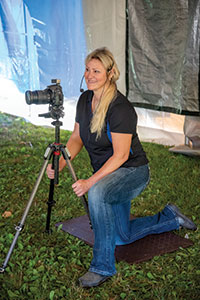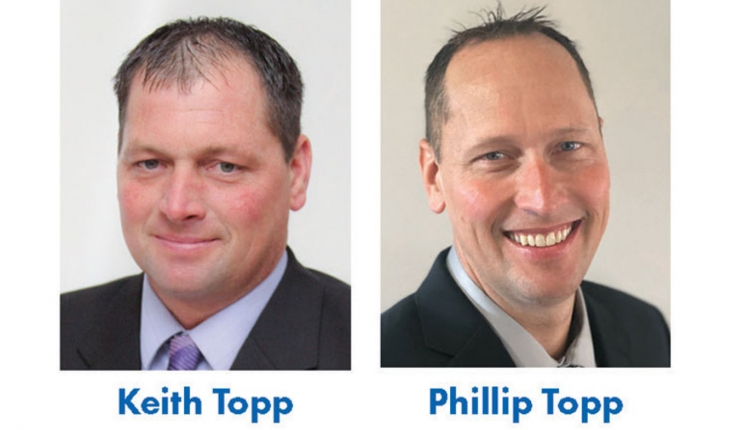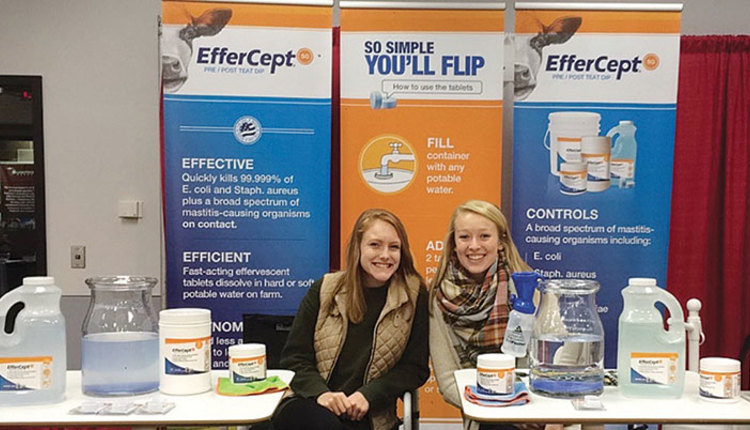The author farms with her family at Ryan-Vu Holsteins in Fond du Lac, Wis., where they raise and work with elite Holsteins and color breeds.

Imagine taking 1,300 photographs over five days. That means, on average, one photo is taken every three minutes.
It’s quite the feat for a regular photographer, let alone one like Cybil Fisher and her crew who photograph all of the outstanding cattle that come through her tents the week of World Dairy Expo. She and her highly skilled team have a very streamlined system during the week of Expo and the month after to ensure the best possible photo of each animal is captured and received in a timely manner.
With over 26 years of experience in cattle photography, Fisher is no stranger to dairy cattle shows and has seen many changes in the cattle photography business over the years. When she began her career working with various photographers and in the photo lab at Agri-Graphics, she printed black and white images from film. Today, she emails most of her photos to clients.
After working with Agri-Graphics for five years, Fisher branched out and began her own photography business, Cybil Fisher Photography Inc. The company specializes primarily in dairy cattle photography but is also able to provide a wide variety of photographic needs from family or individual portraits to commercial agriculture photos.
Evolving with the industry

Many other upgrades have made the process simpler, including backgrounds and lighting. For instance, with background changes and an investment in new lighting equipment, Fisher and her crew can now take photos in any place at any time.
These advancements have also helped Fisher and her team become more flexible with their Expo abilities. Since starting at the show in 2005, the team has expanded to include Fisher’s associate photographer, Lea Jordan, and they both have tents set up that week to photograph cattle. It also takes 12 to 15 photo crew members to staff the tents during the course of the week.
A dedicated crew
The first part of this crew a cattle owner meets is the prep team on the outside of each tent. They greet the clients, prepare the animal for the photo, adjust halters as necessary, and handle any finishing touches before the animal enters the picture tent. They also keep the area neat.
Another team is in place in the photo area. “These six people are responsible for setting up the animal for the photo, with two on rear legs, two on front legs, one holding the animal, and the last person making noise to keep the animal alert and with its ears up when it’s time to snap the photo,” stated Fisher. “This team can have long, trying days, so I bring extra people to assist with leg movement and holding to ensure a break in the action.”
Also in that tent is a person who collects all of the information to identify the animal, its show number, who pays for the photo, and where the images need to be sent. Another very important member of this team makes meals for the crew for the week and helps keep everyone hydrated and healthy.
Like many on the Expo grounds, the crew starts early in the morning and works late into the evening to get owners their best photos. They work anywhere from 10 to 16 straight hours per day, depending on what breeds are showing.
“We generally arrive for setup between 6:30 a.m. and 7 a.m. The prep crew gets their supplies in place while the indoor team turns on the lights and gets the studio ready,” Fisher said. “Once the first animals arrive, we go to work and keep picturing as long as animals keep coming, even if it is 11:30 p.m.”
While this group pushes to get many photos done during the week, there are some challenges they try to anticipate each year. The biggest of these is weather.
“Even though I picture inside a tent at Expo, the cattle being prepped outside are still in the elements, be it wind, rain, snow, or really hot sun,” Fisher noted. “While we do have a certain number of shade tents set up, they are not always enough. Cattle that have to stand in the sun waiting their turn get hot and crabby, and by the time they come into the photo tent, they are over it!”
This can create a domino effect as it takes more patience and time to get them set up while the line continues to grow outside. Fisher acknowledged it’s stressful for all, as her crew is trying to get the best picture possible while being mindful of how long everyone is waiting.
The experience and efficiency of the crew setting up the animal can also present a challenge, as the longer it takes to get the legs right, the longer it takes to get the photo. This inherently can affect the last complicating factor: cattle temperament. Anything from an animal not being properly trained to being hot or not feeling well can ultimately affect crew efficiency and throughput.
Perfecting their process
These situations can be challenging, but Fisher’s experienced crew can handle the pressure. “I feel like we offer a full-service product during Expo week that is economical and convenient for our clients,” she said. “Our smaller clients or farms have limited opportunities to get their animals pictured, and this is the way to go. The animals are already there and ready for the showring. The owners do not have to do anything beyond saying ‘Go get her pictured,’ and we take it from there.”
Following Expo, photo processing continues at the office, where a graphics team assists with post production. It usually stays just as busy for at least another three to four weeks with photo production, color correction, photo resizing, and photo processing. This crew works hard to turn all of the individual photos around within 15 to 16 days post-Expo.
“We always try our best given the factors surrounding the day, cattle temperament, weather, and other factors involved,” Fisher concluded of her team’s goals. “My (our) goal is to capture the best photo possible in an economic and efficient manner for everyone involved.”










